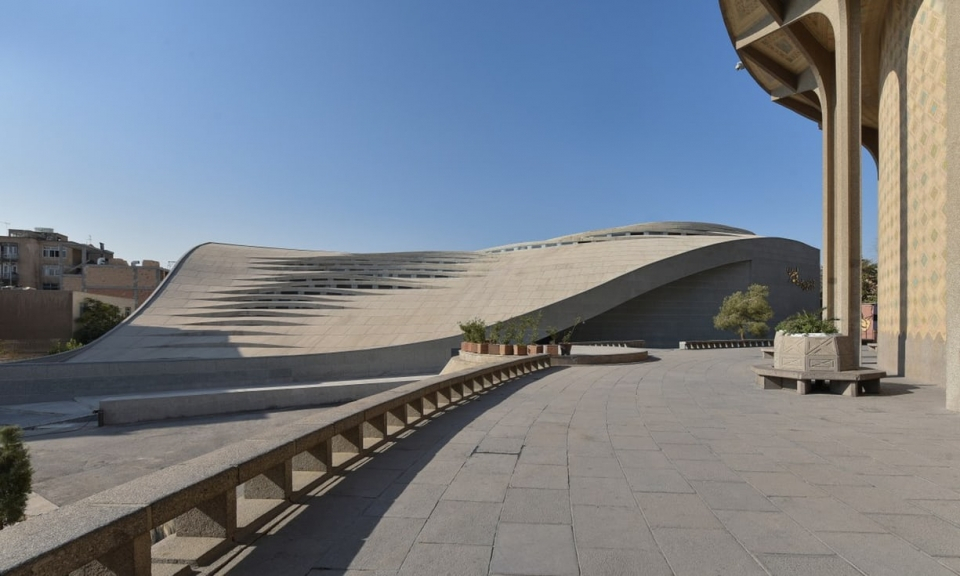Iranian hardliners are refusing to recognise the new Vali-e-Asr mosque next to the City theatre as a place of worship
When the Tehran authorities commissioned the construction of a mosque near the City theatre – one of Iranian capital’s most distinctive buildings – it was always going to be a tricky balancing act for the architects to design something unique that did not eclipse the adjacent structure.
The theatre, which was built before the 1979 revolution, has a spectacular tiled circular structure with external pillars and is the largest exclusive space in Iran for performing arts. The new mosque next door is a modern building that sits in harmony with it, sweeping from the ground towards the Qibla (the direction of Mecca), allowing sunlight through windows embedded in a wave-like structure.
....
But the Vali-e-Asr mosque, designed by the Iranian architects Reza Daneshmir and Catherine Spiridonoff, is stirring controversy in a country that hosts some of the world’s most glittering places of worship. Iranian hardliners are refusing to recognise it as a mosque, complaining that it does not have a minaret or proper dome, and that it is dwarfed by the theatre.
The conservative Mashregh News said: “A mosque sacrificed for the City theatre,” adding that it had been “decapitated in the honour of the theatre”. It was “an insulting, postmodern design” that is “empty of any meaning”, it said.
The mosque was due to be officially inaugurated this summer, nearly 10 years after the couple’s Tehran-based architecture firm, Fluid Motion, was commissioned to design it. The building is almost finished, but controversy has led to its funding being cut, meaning that the interior design has not been completed. Its fate remains in doubt. Some media reports suggest that the authorities intend to turn it into an Islamic cultural centre, with possible physical alterations.
The mosque is located in “one of the most culturally sensitive places in Tehran”, according to its architects. It is at a point where the Enghelab (Revolution) Street crosses the tree-lined Vali-e-Asr, the most important junction in the city, not far from Tehran University and its surrounding bookshops.
“We tried to create an interaction between the mosque, which has a cultural essence, and the City theatre. We wanted to make it a cultural project that would be in harmony with its surroundings – the mosque should respond to the needs of its own time,” the architects said.
....

